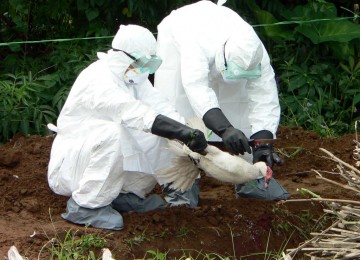In four months, the deadly viral haemorrhagic fevers have hit Uganda three times, killing at least 29 people in Uganda.
An ongoing outbreak of a different strain of Ebola, following previous attacks of Ebola and Marburg, raises the question why we are becoming so vulnerable to these viral attacks. First to be hit, in July, was the western district of Kibaale, where Ebola claimed 17 lives including 12 from the same family.
Hardly a week after authorities declared the country Ebola-free, Marburg, described by scientists as a ‘cousin of Ebola’, struck Kabale district. It later spread to Rukungiri, Mbarara and Ibanda districts killing at least seven lives. As the country was struggling to contain Marburg, a fresh Ebola outbreak was confirmed in Luweero last week.
So far, the Luweero Ebola outbreak has claimed five lives, while another five have tested positive for the deadly haemorrhagic fever. Explaining these attacks, health experts believe human beings are largely to blame. Dr Mariam Nanyonjo, the disease prevention advisor, at the World Health Organisation (WHO) Kampala office, blames increasing contact with wild animals.
“Monkeys and bats are the reservoirs for Ebola, and not all bats but fruit-eating bats,” she says.
Nanyonjo says there are many people are exposing themselves by encroaching on wildlife habitats, which host these viruses. Ugandans are also known to love bush meat, further raising the risk. And once a person contracts the virus, he/she passes it on to other humans they come into contact with.
Deforestation
According to the Centres for Disease Control and Prevention (CDC), the Old World fruit bats of the family Pteropodidae, are considered to be natural hosts for the Ebola and Marburg viruses. Dr Denis Lwamafa, commissioner for National Disease Control in the ministry of Health, blames the depletion of wild animals’ habitats, such as forests, for the outbreaks.
“Where we have had Ebola, the monkeys were coming into people’s homes and sharing food, and the bats were even staying in some houses after their habitats were destroyed and bushes cleared for farming in the cases of Luweero, Kibaale, and Bundibugyo, among other areas.” Dr Lwamafa says.
Dr Joaquim Saweka, WHO Country Representative to Uganda, believes increased exposure of humans to secretions from virus hosts like bats and monkeys makes us more susceptible to Ebola.
“In some areas, people eat fruits and foods that have already been part-eaten by bats, which is very dangerous,” he said.
Indeed, ecological studies done in Maramagambo forest after the first Marburg outbreak in Kamwenge in 2007 revealed that some bats and wild animals harboured the Marburg virus.
“People living near forests should take precautionary measures and avoid eating wild animals,” cautions Health Minister Christine Ondoa.
Link to pigs
Canadian scientists have shown that the deadliest form of the Ebola virus could be transmitted by air. Their experiments show that the virus was transmitted from pigs to monkeys without any direct contact between them.
The fruit bat has long been considered the natural reservoir of the infection. But recent research suggests that pigs, both wild and domestic, could be a hidden source of Ebola Zaire - the most deadly form of the virus.
In their experiments, the pigs carrying the virus were housed in pens with the monkeys in close proximity but separated by a wire barrier. After eight days, some of the monkeys were showing clinical signs typical of Ebola and were killed after the experiment. However, researchers believe that the airborne attacks never break out over large parts of Africa.
No treatment
This is the fourth major Ebola outbreak reported in Uganda in 12 years, including in 2000 (224 deaths) and 2007 in Bundibugyo (38 deaths). Although there is no known cure for the fevers, Ondoa says, patients can be treated for their symptoms to strengthen their resistance. As with previous cases, the ministry of Health is tracing and listing people that may have been exposed to suspected and confirmed cases.
Although the WHO is yet to advise a travel ban to Uganda, Ugandans travelling abroad may face difficulties; in July Saudi Arabia rejected Ugandan Muslim pilgrims to Mecca because of Ebola. http://www.observer.ug/index.php?option=com_content&view=article&id=22228%3Aebola-why-uganda-is-so-prone-&catid=34%3Anews&Itemid=114




